Teaching is evolving. Technology isn’t just an aid; it’s a game changer. In fact, 80% of educators say AI tools help them save time and enhance student engagement.
Imagine transforming lesson planning and grading with a single tool. With the right AI, teachers can streamline their workflows, personalize learning, and even automate routine tasks.
But which AI tools are truly making waves in the classroom? Let’s dive into the best AI tools that are revolutionizing education, one innovation at a time. Discover how these tools can reshape your teaching experience.
1. Comprehensive Review of Maestra AI: An Ideal Tool for Teachers
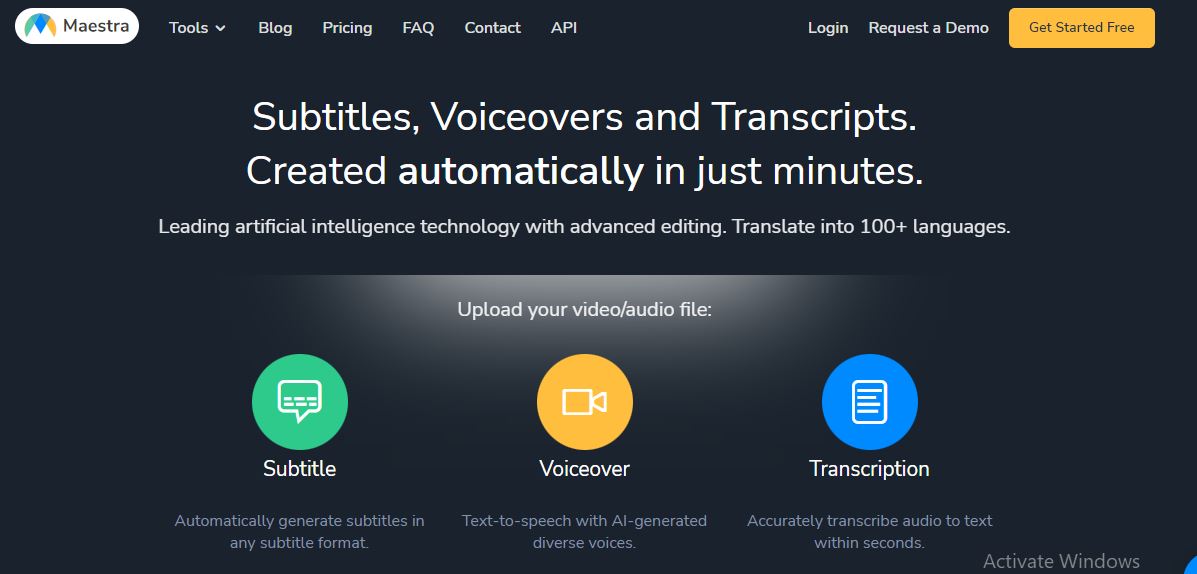
Reasons to Buy:
- Automated Transcription: Quickly converts speech to text, ideal for lecture transcriptions.
- Multilingual Support: Offers transcription, subtitling, and voiceovers in over 100 languages, breaking down language barriers in classrooms.
- User-Friendly Interface: The interactive editing platform simplifies the transcription process, making it accessible for educators.
- Cloud-Based Flexibility: Work from anywhere and collaborate in real-time with colleagues.
- Secure Data Handling: Prioritizes the security of your content through encryption and secure cloud storage.
What Sets Maestra Apart:
- Multilingual Capabilities: Unlike many competitors, Maestra supports a vast range of languages, making it ideal for international or multilingual classrooms.
- Voiceover Features: Generate natural-sounding voiceovers in various languages, which is particularly useful for creating inclusive content.
- Comprehensive Format Support: Allows exporting in multiple formats, ensuring compatibility with different teaching platforms.
What It Lacks:
- Advanced Video Editing: While it excels in transcription and voiceover, Maestra lacks in-depth video editing tools, limiting its functionality for more complex video projects.
- Pricing Flexibility: Although it offers robust features, the pricing might be steep for individual teachers or smaller educational institutions, especially if advanced features are required.
2. MagicSchool AI: A Comprehensive Review for Educators
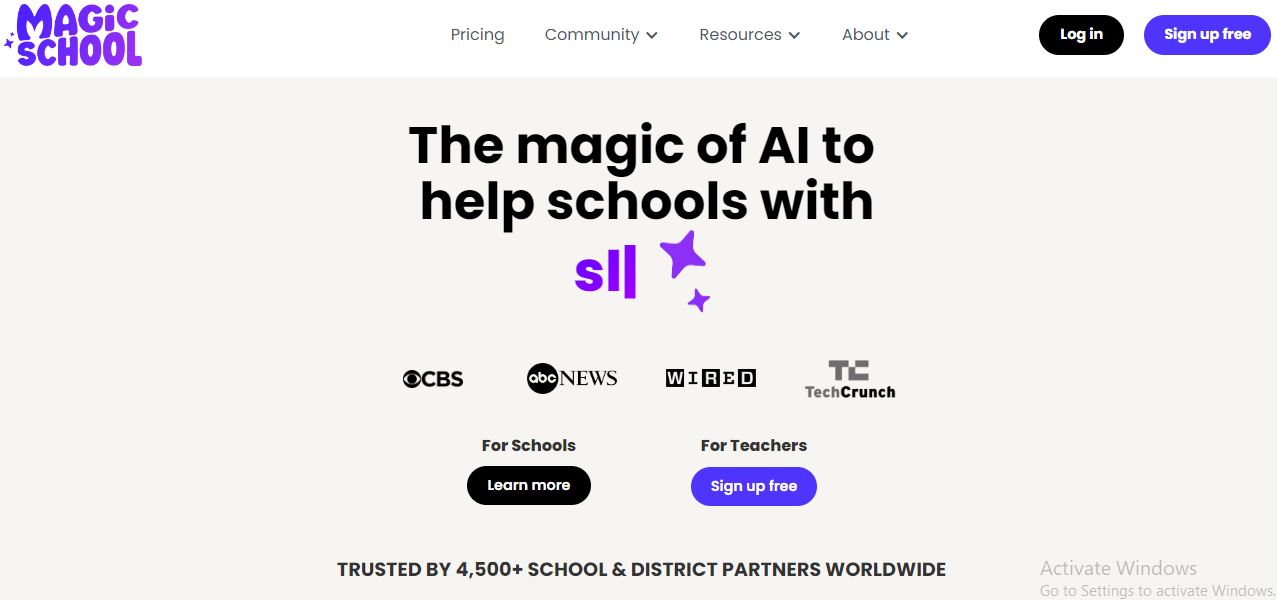
Why You Should Consider MagicSchool AI
- Streamlined Lesson Planning: The platform offers a Lesson Planning Wizard that helps generate engaging lesson plans based on specific learning objectives, grade levels, and subject areas, saving teachers hours of prep time.
- Automated Grading & Feedback: MagicSchool AI’s assessment tools automatically grade multiple-choice and fill-in-the-blank questions, while also providing suggestions for personalized feedback, reducing the workload on educators.
- Differentiation Tools: Tailors learning experiences to individual student needs by generating differentiated activities and assessments, ensuring all students can learn effectively.
- Enhanced Communication: Facilitates communication with parents and students by generating personalized progress reports, newsletters, and translating messages into multiple languages.
- Support for IEPs: Offers tools for creating Individualized Education Programs (IEPs) and managing student data, making it easier to support diverse learners.
What Sets MagicSchool AI Apart
MagicSchool AI excels in automating repetitive educational tasks, allowing teachers to focus more on student engagement and less on administrative duties. Its differentiation capabilities ensure that learning is inclusive, catering to various learning styles and abilities.
The communication tools are also noteworthy, as they enable teachers to maintain a strong connection with parents, fostering a collaborative learning environment.
Moreover, MagicSchool AI is led by Adeel Khan, a former educator with extensive experience, which gives the platform a strong foundation in understanding the real challenges teachers face.
Areas Where MagicSchool AI Falls Short
- Limited Subject Coverage: While the platform offers extensive features, it may not cover all specialized subjects comprehensively. Educators with niche teaching areas might find the tool less beneficial.
- Data Privacy Concerns: As with many AI tools, there are concerns about data privacy. Educators must thoroughly review the platform’s data collection and usage policies before implementation.
- Cost Considerations: Although MagicSchool AI offers a free tier, advanced features are locked behind paid plans. Schools and educators need to evaluate whether the additional functionalities justify the cost.
3. Comprehensive Review of ChatGPT: An AI Tool for Teachers

Reasons to Buy:
- Versatile Assistant: ChatGPT is highly adaptable, supporting teachers with lesson planning, generating quizzes, drafting emails, and even assisting in creating creative content like stories or essays for students.
- Ease of Use: It requires minimal setup and can be accessed directly from a web browser, making it easy for educators to integrate into their workflow.
- Time-Saving: Teachers can save significant time on repetitive tasks like grading, summarizing content, or providing feedback, allowing them to focus more on student interaction.
- Personalized Learning: ChatGPT can help create customized learning materials tailored to individual student needs, enhancing the learning experience.
- Cost-Effective: The free version of ChatGPT provides a robust set of features, making it an affordable option for educators on a budget.
What Sets This Tool Apart:
- Generative AI for Creativity: ChatGPT can assist in brainstorming ideas, developing creative writing prompts, and even generating unique learning activities. This ability to think “outside the box” gives teachers a powerful tool to stimulate student engagement and creativity.
- Language Assistance: It can help both teachers and students with language learning by offering translations, grammar checks, and vocabulary expansions, making it a valuable resource in multilingual classrooms.
- Integration with Other Tools: ChatGPT can complement other AI tools and platforms that educators use, such as Education Copilot and Canva. This synergy allows teachers to create a cohesive digital teaching environment.
What It Lacks:
- Up-to-Date Information: The free version of ChatGPT is based on data only up to 2021, which limits its ability to provide the most current information. This can be a drawback for subjects that require the latest data or trends.
- Accuracy Issues: While ChatGPT is highly capable, it is prone to occasional errors and can sometimes generate incorrect or biased information. Teachers need to verify the content it produces to ensure accuracy.
- Limited Citation Capability: Unlike some other AI tools, ChatGPT does not always cite its sources, making it less ideal for tasks where referencing and academic integrity are crucial.
4. Kahoot: A Comprehensive Review for Teachers

Reasons to Consider Kahoot:
- Engagement-Driven Learning: Kahoot transforms traditional lessons into interactive experiences, making it easier to capture students’ attention and maintain their interest.
- Customizable Content: Teachers can create personalized quizzes tailored to the specific learning levels of their students, making it versatile across different grades and subjects.
- Ease of Use: Both teachers and students find Kahoot easy to navigate, whether using a phone, tablet, or computer, making it accessible for all ages.
- Real-Time Feedback: The platform provides instant feedback, allowing students to see how they perform and enabling teachers to adjust their lessons accordingly.
- Collaborative Learning: With features that support multiplayer games, Kahoot fosters a competitive yet collaborative environment in the classroom.
- Fun and Interactive: By incorporating elements of play, Kahoot makes learning more enjoyable, which can lead to better retention of information.
What Sets Kahoot Apart:
Kahoot’s unique appeal lies in its ability to blend education with entertainment. The platform’s game-based learning model is highly effective in increasing student participation.
It also supports various learning styles, whether auditory, visual, or kinesthetic, ensuring that every student has the opportunity to thrive. Furthermore, Kahoot’s integration with other tools and its constant updates keep the platform fresh and relevant.
Kahoot is also praised for its flexibility, allowing educators to use it for formative assessments, review sessions, and even during remote learning. This adaptability makes it a go-to tool for teachers looking to innovate their teaching methods.
Where Kahoot Falls Short:
Despite its many advantages, Kahoot does have some limitations. The most common complaint is its dependency on a stable internet connection.
During high-traffic times, technical glitches can disrupt the flow of lessons, which can be frustrating for both teachers and students.
Additionally, the platform’s focus on speed-based competition might not suit all learning environments, especially where thoughtful, in-depth responses are required. There are also occasional issues with uploading media files, which can limit the scope of content creation.
5. Quizizz: An Engaging and Flexible Tool for Teachers

Reasons to Buy
- Engagement Through Gamification: Quizizz transforms learning into an interactive experience, using game-like elements to captivate students and make lessons more engaging.
- Ease of Use: Teachers can effortlessly create quizzes with AI, using prompts, documents, or web links, saving significant preparation time.
- Customizable Content: With 18 different question types and the ability to integrate multimedia, lessons can be tailored to different learning styles.
- Integration with LMS: Seamlessly integrates with popular Learning Management Systems like Google Classroom, Schoology, and Canvas.
- Student-Centered Learning: Offers individualized student access to questions and answers, fostering a more personalized learning environment.
- Rich Resource Library: Access to a vast library of quizzes and lessons created by educators globally, allowing easy customization for specific needs.
What Sets Quizizz Apart
- Innovative Use of AI: Quizizz AI stands out by offering quick quiz generation from various sources like YouTube videos or documents, streamlining the quiz creation process for teachers.
- Paper Mode: Unique to Quizizz, Paper Mode allows teachers to use QR codes for student responses, making the tool accessible even in classrooms with limited technology.
- Gamified Learning Experience: The platform’s focus on gamification not only enhances engagement but also motivates students through competition, rewards, and fun feedback mechanisms like memes.
What It Lacks
- Limited Question Types: While versatile, the platform’s question types may not be suitable for more complex assessments, potentially limiting its use for advanced subjects.
- Technology Dependency: In some settings, students may face issues accessing the platform, especially in technology-limited environments, impacting its effectiveness.
- Meme Customization: Adding and customizing memes can be cumbersome, and borrowed questions might come with restrictions on meme usage, limiting personalization.
6. Curipod: An In-Depth Guide for Educators
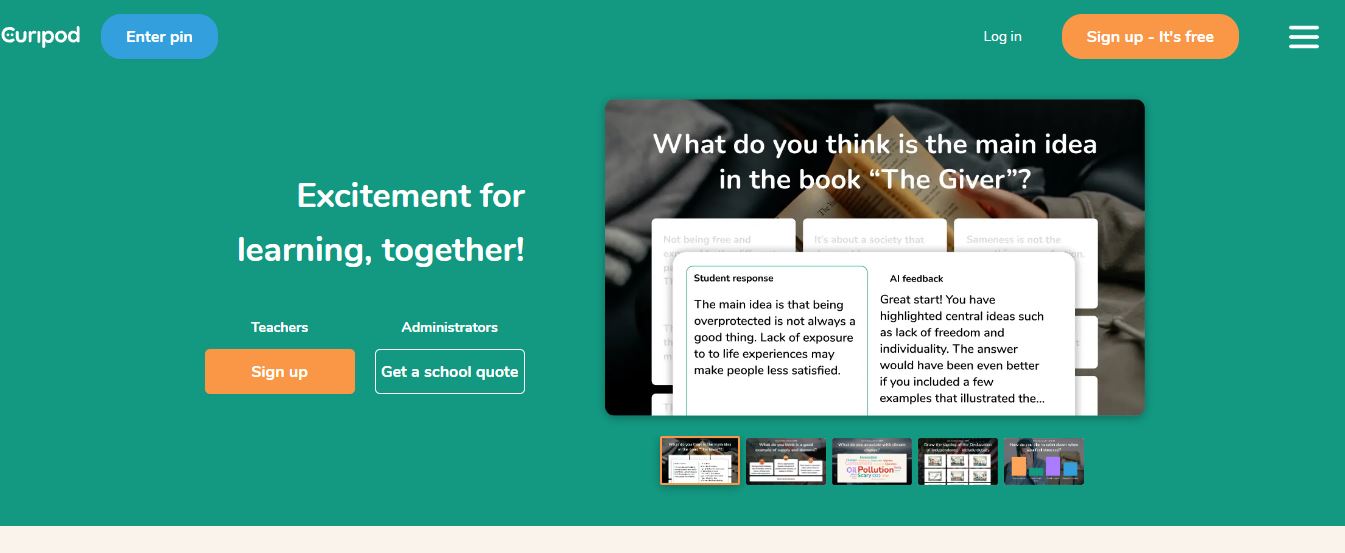
Reasons to Consider Curipod
- Time-Saving Templates: Curipod offers a vast library of ready-made templates and slide decks, significantly reducing the time spent on lesson preparation. Teachers can quickly customize these templates, making lesson creation more efficient.
- Enhanced Student Engagement: The platform includes interactive features like polls, quizzes, open-ended questions, and drawing prompts that encourage active participation from students. This makes the learning process more dynamic and inclusive.
- Customizable Content: Teachers have the flexibility to tailor lessons to their specific teaching style and student needs. This personalization ensures that lessons are both relevant and impactful.
- AI-Driven Lesson Creation: Curipod uses AI to generate content such as lesson hooks and drawing prompts, making each lesson unique and engaging.
- Accessibility: Curipod is accessible on any device with an internet connection, making it easy for both teachers and students to use, regardless of their technology setup.
What Sets Curipod Apart
- Collaborative Lesson Creation: Curipod allows teachers to work together on lesson plans, making it easier to integrate diverse ideas and approaches into the classroom.
- Active Community Support: Educators who use Curipod become part of a vibrant online community where they can share resources, ideas, and get support from the Curipod team. This sense of community fosters continuous professional growth and innovation.
- Real-Time Interaction: The platform’s interactive elements allow teachers to adjust the pace and content of lessons in real-time based on student feedback, ensuring a more responsive and engaging learning experience.
- Innovative Use of AI: Unlike many tools that are still refining their AI capabilities, Curipod’s AI is well-integrated, making the lesson creation process faster while still allowing for teacher control and customization.
Areas Where Curipod Could Improve
- Limited Free Plan: While the free version of Curipod is useful for getting started, it comes with limitations, such as a cap on the number of lessons and translation credits. For full functionality, educators need to upgrade to a premium plan.
- Pricing for Larger Institutions: The cost of school and district licenses can be high, especially for larger institutions, which might limit accessibility for some schools.
- Learning Curve: Although the platform is designed to be user-friendly, some educators may find the initial learning curve steep, particularly when it comes to maximizing the use of AI features.
7. Slidesgo: Comprehensive Review for Teachers
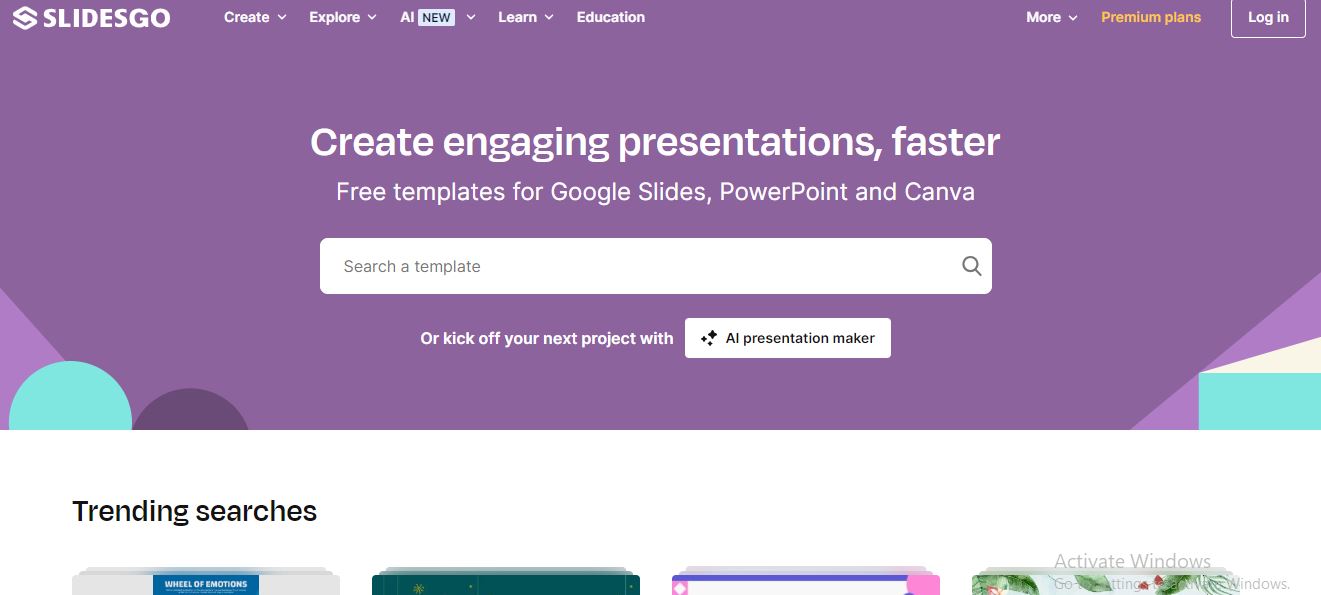
Reason to Buy:
- Diverse Templates: Access a wide array of templates suitable for various subjects and educational needs.
- AI-Powered Icebreaker Generator: Engage students with personalized icebreakers tailored to specific topics and audiences.
- Teacher Toolkit: Utilize resources like lesson planners, attendance lists, and evaluation criteria specifically designed for educators.
- Ease of Use: Simple customization options allow teachers to adapt templates quickly to match their style and classroom needs.
- Affordability: Offers a generous free plan with an option to upgrade for premium features at a reasonable price.
What Sets Slidesgo Apart:
Slidesgo stands out as a highly valuable resource for teachers due to its extensive library of ready-to-use Google Slides and PowerPoint templates.
The AI-powered tools, such as the icebreaker generator, add a layer of interaction that can help teachers maintain student engagement right from the start. Additionally, the Teacher Toolkit provides comprehensive support, covering everything from lesson planning to classroom management.
Slidesgo’s focus on education ensures that teachers have access to visually appealing and pedagogically sound materials that save time while enhancing learning.
What It Lacks:
Despite its strengths, Slidesgo has some limitations. The free plan restricts users to downloading only five templates per month, which may not be sufficient for teachers with heavy content creation needs.
Additionally, some advanced features, such as access to premium fonts and images, are locked behind the paid subscription, potentially limiting creative flexibility for those not willing to invest in the premium version.
8. Master Guide: Eduaide.AI for Teachers

Reasons to Buy Eduaide.AI
- Comprehensive Tool Suite: Eduaide.AI provides access to over 150 specialized tools, making it a one-stop solution for various educational needs, from lesson planning to differentiated instruction.
- Generative AI Integration: Leveraging advanced Generative AI models, such as OpenAI’s GPT-3.5 and GPT-4, Eduaide.AI excels at creating customized educational content and feedback, ensuring it’s tailored to specific teaching objectives.
- User-Friendly Interface: Designed with teachers in mind, Eduaide.AI’s intuitive workspace and card system make it easy to organize, edit, and export instructional materials, saving valuable time.
- Automated Feedback: The Feedback Bot offers timely and constructive feedback on student work, ensuring that educators can focus more on personalized teaching rather than routine grading tasks.
- Customizable Resources: The platform allows for deep customization of educational resources, enabling teachers to adapt content to suit their classroom’s specific needs.
- Efficient Assessment Tools: Eduaide.AI’s Assessment Builder aligns assessment items directly with educational standards, simplifying the creation of meaningful evaluations.
What Sets Eduaide.AI Apart?
Eduaide.AI distinguishes itself through its deep integration of evidence-based instructional design principles with cutting-edge AI technology. The platform doesn’t just automate tasks; it enhances the educational process by aligning AI outputs with proven teaching methods.
This focus ensures that the content generated by Eduaide.AI is not only accurate but also pedagogically sound, making it a reliable tool for educators aiming to provide high-quality education.
Additionally, the platform’s versatility across various teaching tasks—from creating learning resources to automating administrative duties—makes it an indispensable tool for educators looking to streamline their workflow while maintaining high educational standards.
What It Lacks
- Limited Language Support: Although the platform excels in English, its effectiveness in non-English language settings could be enhanced, particularly for educators teaching in multilingual environments.
- Steep Learning Curve for Advanced Features: While the interface is user-friendly, mastering the more advanced tools and customization options may require a significant time investment, particularly for educators less familiar with AI technologies.
- Dependency on AI: Relying heavily on AI-generated content may sometimes lead to less personalized student interactions, as automated feedback can’t fully replicate the nuances of human judgment.
9. Comprehensive Review of ChatLabs by Writingmate
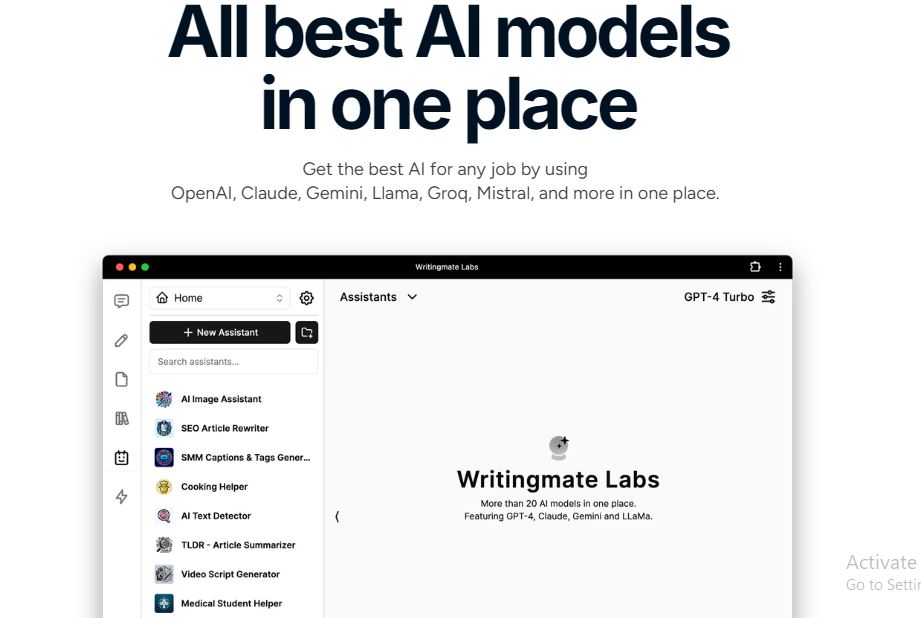
Reasons to Consider ChatLabs by Writingmate
- Versatile AI Integration: Offers interaction with 20 AI models, including GPT-4 and DALL-E, which allows teachers to create, customize, and manage diverse educational content.
- Personalization Capabilities: Facilitates personalized learning experiences by letting educators upload, summarize, and adjust study materials to meet individual student needs.
- Customizable AI Assistants: Teachers can either choose from prebuilt AI assistants or create custom ones to suit their specific teaching requirements, enhancing classroom productivity.
- Advanced Security and Privacy: Ensures data security and privacy, which is crucial when dealing with student information.
- Mobile and Web Accessibility: Available on both mobile and web platforms, providing flexibility and convenience for educators who need to work from different locations.
- No Length Limits: Unlike many other tools, there are no limits on message or text lengths, making it suitable for in-depth assignments and communication.
What Distinguishes ChatLabs by Writingmate
- Comprehensive AI Toolbox: Unlike other tools that offer a single AI model or functionality, ChatLabs by Writingmate integrates a variety of AI models in one platform. This enables educators to tackle multiple tasks, such as content creation, image generation, and summarization, from a single interface.
- External API Integration: The ability to connect to external APIs allows for an even more tailored experience, accommodating specific needs beyond the platform’s built-in capabilities.
- Wide Range of Educational Prompts: Comes with a rich catalog of prompts designed to assist with various teaching tasks, making it easier to communicate effectively and efficiently within the educational environment.
Areas Where ChatLabs Could Improve
- Learning Curve for Customization: While the customization options are a strong point, they may be daunting for some users, especially those who are less tech-savvy or new to AI tools. Understanding how to maximize these features could require a time investment.
- Subscription Costs: Full access to all features requires a paid subscription, which might be a barrier for educators or institutions with limited budgets.
10. Master Guide to AudioPen: The AI Tool Revolutionizing Teaching

Why AudioPen Might Be Your Next Go-To Tool
- Streamlined Content Creation: AudioPen enables educators to effortlessly convert spoken ideas into written text. This is a game-changer for those who prefer speaking over typing or need to quickly transcribe lectures and notes.
- Enhanced Accessibility: With its advanced speech-to-text technology, AudioPen makes it easier for teachers to create content that is accessible to students with various learning needs, including those who benefit from auditory learning.
- Efficient Workflow Integration: AudioPen integrates smoothly with existing educational tools and platforms, ensuring that teachers can maintain their current workflows without disruption.
- Time-Saving Features: By automating the transcription process, AudioPen saves valuable time, allowing teachers to focus more on teaching and less on administrative tasks.
What Makes AudioPen Stand Out
- Accuracy and Precision: Leveraging state-of-the-art AI, AudioPen offers high accuracy in speech recognition, minimizing errors and ensuring reliable transcription.
- Customizable Settings: Users can adjust the tool’s settings to fit their specific needs, including language preferences, accent recognition, and formatting options.
- Seamless Integration: AudioPen’s ability to integrate with various educational platforms means that teachers can import and export data effortlessly, enhancing their productivity.
- User-Friendly Interface: The tool is designed with simplicity in mind, making it accessible for all educators, regardless of their tech-savviness.
Areas Where AudioPen Could Improve
- Limited Offline Functionality: Currently, AudioPen requires an internet connection for optimal performance, which might be a limitation in areas with unstable connectivity.
- Language Support: While the tool supports multiple languages, there may be limitations in terms of regional accents and dialects, which could affect transcription accuracy for non-native speakers.
- Feature Set Limitations: Some users may find that AudioPen’s features are relatively basic compared to more comprehensive content creation tools that offer advanced editing and collaboration options.

